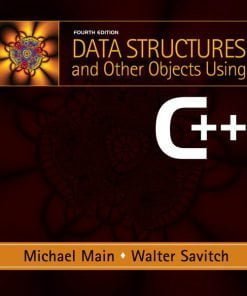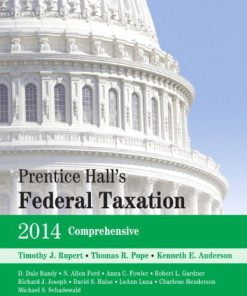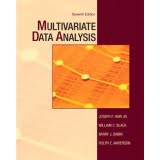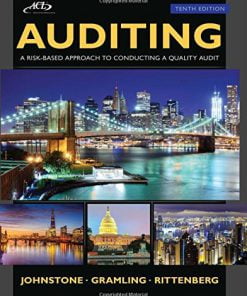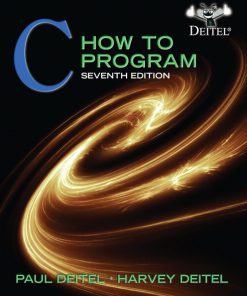Solution Manual for Corporate Partnership Estate and Gift Taxation 2013 7th Edition by Pratt
$35.00 Original price was: $35.00.$26.50Current price is: $26.50.
Solution Manual for Corporate Partnership Estate and Gift Taxation 2013 7th Edition by Pratt
Instant download Solution Manual for Corporate Partnership Estate and Gift Taxation 2013 7th Edition by Pratt pdf docx epub after payment.
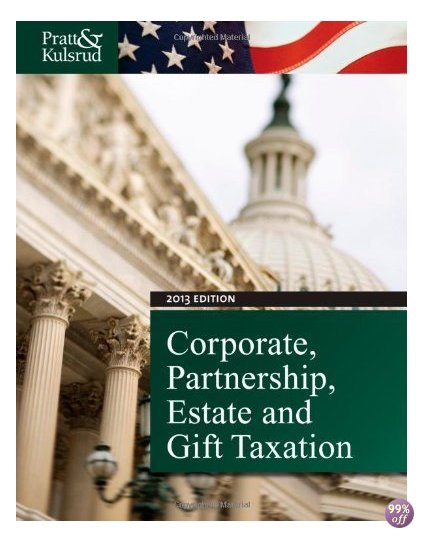
1
An Overview of Federal Taxation
Solutions to Problem Materials
Discussion Questions
1-1 A tax base is the amount upon which a tax is levied. The tax base for the Federal income tax is called “taxable income” and is the taxpayer’s total income less exclusions, deductions, and exemptions that might be available to the taxpayer. (See Exhibits 1.3, 1.4, and 1.5 and pp. 1-10 through 1-17.)
The tax base for the Federal estate tax is called “total taxable transfers” and is computed as follows:
Gross Estate, less the sum of
- Expenses, indebtedness, and taxes;
- Losses;
- Charitable bequests; and
- Marital deduction
Equals: Taxable estate
Add: Taxable gifts made after December 31, 1976
Equals: Total taxable transfers.
The tax base for the Federal gift tax is called “taxable transfers to date” and is computed as follows:
Fair market value of all gifts made in the current year, less the following:
- Annual exclusions ($13,000 per donee in 2012),
- Marital deduction, and
- Charitable deductions
Equals: Taxable gifts for the current year
Add: All taxable gifts made in prior years
Equals: Taxable transfers to date.
(See Exhibit 1.5 and pp. 1-13 through 1-17.)
1-2 A proportional tax rate is one that is a constant percentage regardless of the size of the tax base (i.e., as the base changes the rate remains the same). (See Example 4 and p. 1-6.) A progressive tax structure is one in which a higher percentage rate is applied to increasing increments of the tax base [i.e., as the base increases (decreases) the rate increases (decreases)]. (See Example 5 and pp. 1-6 and 1-7.)
A marginal tax rate of any rate structure is that percentage at which the next dollar added to the tax base will be taxed. In a proportional tax rate structure, the marginal tax rate remains the same through all levels of taxation. The tax impact of an additional dollar of income remains the same through all levels of taxation. In a progressive tax structure, the marginal tax rate increases as the level of taxable income increases. The tax impact of an additional dollar of income or deduction varies as the level of taxable income varies and thus the total tax rate is determined by the level of income which is taxed. However, in both cases, the tax impact of an additional dollar of income or an additional deduction can be determined. (See Example 6 and p. 1-8.)
1-3 In the technical sense (i.e., in terms of the definitions of proportional and regressive rate structures); the media have reached an erroneous conclusion. However, when the nature of these taxes is considered relative to the taxpayer’s ability to pay, the media is correct.
According to the technical definition, a regressive tax rate structure is one where the rate decreases (increases) as the base increases (decreases). In contrast, in a proportional tax rate structure, the rate is a constant percentage of the base. In the technical sense, both sales taxes and social security taxes are proportional taxes because the rate is always the same regardless of the size of the base. This is because the tax rates are defined in terms of the base on which they are levied.
Relative to the taxpayer’s ability to pay, however, proportional taxes are regressive. For example, as the taxpayer’s ability to pay grows or his income rises, the taxpayer’s total sales taxes become a smaller percentage of income. Because the rate becomes smaller as the criterion for paying increases, the tax is regressive. (See pp. 1-6 and 1-7.)
- A deduction is a reduction in the gross (total) amount that must be included in the taxable base. A tax credit is a dollar for dollar offset against a tax liability. (See Examples 3 and 10 and pp. 1-6 and 1-9.)
The value of a deduction is a function of the taxpayer’s marginal tax rate. For example, if a deduction equals $1,000 for a taxpayer in the 28 percent bracket, the value of that deduction would be $1,000 × 28% or $280. The $280 is the amount of tax that would be saved by using the $1,000 deduction. The value of a credit, on the other hand, is the full value of the amount of the credit (e.g., a $1,000 credit will save the taxpayer $1,000). (See Examples 7 and 10 and pp. 1-8 and 1-9.)
Accordingly, if the taxpayer is faced with a choice between a deduction and a credit, he must use his marginal tax bracket to determine the relative worth of the two amounts. If, for example, the taxpayer is choosing between a $1,000 deduction or a credit of 20 percent of the $1,000 expenditure, and assuming he is in the 28 percent bracket, he would go through the following analysis:
Value of the credit: 20% × $1,000 = $200
Value of the deduction: 28% (marginal tax rate) × $1,000 = $280
In this case, the taxpayer would choose the $280 deduction over the $200 credit.
1-5 Significant differences between computing a corporation’s taxable income and computing an individual’s taxable income include the following:
- Only individual taxpayers have deductions “for” adjusted gross income. Corporations simply compute gross income and then reduce it with allowable deductions to compute taxable income.
- Only individual taxpayers have a standard deduction or itemized deductions.
- Only individual taxpayers have personal and dependency exemptions.
(Compare Exhibits 1.2 and 1.3, on p. 1-11.)
1-6 The principal reason that Congress continues the pay-as-you-go requirement is that many individuals probably would not control their expenditures well enough to have enough money left to pay their taxes at the end of the year. Such individuals would spend their money and have none left with which to pay tax. Additionally, this requirement smooths out the receipt of revenues to the Federal government and allows it to plan for its own cash flow needs. (See p. 1-10.)
1-7 The marital deduction is the deduction allowed for gift and estate tax purposes for amounts transferred by one spouse to the other spouse. The amount of the deduction is unlimited. In other words, one spouse may transfer an unlimited amount of property to the other spouse either by gift or, after death, through the estate and pay no tax on the transferred amount. Of course, without further action, the recipient spouse would pay gift or estate tax on a subsequent transfer. For estate tax purposes, the marital deduction effectively postpones the tax until the surviving spouse dies. (See p. 1-14.)
1-8 In 2012, the estate tax credit (the unified credit) is used to offset up to $1,772,800 of gift or estate taxes, the equivalent of $5.12 million in taxable gifts or a $5.12 million taxable estate. Note that any of the credit (i.e., exemption) used during life to offset gift taxes is not available at death. Thus, in 2012, the total amount of transfers-including both those made during life and at death-that can be sheltered from gift and estate taxes is $5.12 million. (See Example 11 and pp. 1-13 and 1-14.)
1-9 The annual exclusion for the Federal gift tax is $13,000 per donee in 2012. A married individual may elect to join with his or her spouse in making gifts, and thus, husband and wife together have a $26,000 annual exclusion per donee in 2012. (See Examples 14 and 15 and pp. 1-14 through 1-15.)
Excluding consideration of the unified credit, a widow interested in making gifts to her daughter and seven grandchildren may make a $13,000 gift to each of them tax-free. Thus, $104,000 of gifts (8 donees × $13,000) could be made annually without a gift tax.
1-10 The gift-splitting election is a means whereby a husband and wife may elect to treat V2 of the gifts made by one spouse as if made by the other spouse (i.e., split gifts between them) even though the property donated is owned by only one of the spouses. Through the gift-splitting election, the spouses may make use of two annual exclusions and two lifetime applicable credit amounts in order to reduce their gift tax liability. (See Example 15, p. 1-16.)
For many purposes, a married couple is considered to be one taxpaying unit. For this reason, Congress allowed a married couple to file a joint income tax return; through that they split their income regardless of which spouse actually earned it. In this way, a higher-bracket spouse’s income is split with a lower-bracket spouse, and thus the marginal impact of the tax rates is reduced. Similarly, with the gift-splitting election, the husband and wife are considered to be one taxpaying unit and thus are able to share their gift giving. Note, however, that there are no joint gift tax returns (like income tax returns).
1-11 An estate tax is a tax on the right to transfer property, whereas an inheritance tax is a tax on the right to receive property at death. An estate tax is imposed upon the decedent’s estate, whereas an inheritance tax is imposed on the heirs on the receipt of property from an estate. The major difference is that the estate tax rate is applied to the entire estate, while inheritance tax rates are applied to the amounts received by the heirs and such rates vary depending on the relationship between the decedent and the heir. (See Example 17 and pp. 1-17 and 1-18.)
1-12 The FICA tax is imposed on both an employee and his employer if the employee is eligible for Social Security benefits. The Federal unemployment tax, FUTA, is imposed on employers who pay wages of $1,500 or more during any calendar quarter in the calendar year, or who employ at least one individual on each of some 20 days during the calendar year or previous year. The purpose of the FICA tax is to fund the Social Security system. The purpose of the FUTA tax is to fund unemployment benefit programs of the states.
With respect to FICA, both employees and the employer bear the burden of the tax equally. With respect to FUTA, only the employer pays this tax. (See pp. 1-18 through 1-24.)
1-13 The maximum FUTA (federal unemployment tax) tax is 6.2% × $7,000, or $434 per employee, per year. If the employer has three employees, then his FUTA payment is 3 × $434, or $1,302. The maximum FUTA tax credit allowed against an employer’s FUTA tax liability for any similar tax paid to a state is currently 5.4 percent of the covered wages or a maximum of $378 ($7,000 × 5.4%) per employee. Hence, in this case, the credit for FUTA taxes paid to the state would be a maximum of $378 × 3, or $1,134. Therefore, the amount of FUTA taxes paid to the Federal government would be $168 ($1,302 — $1,134 = $168). (See pp. 1-23 and 1-24.)
1-14 A sales tax is a tax imposed on the gross receipts from the retail sale of tangible personal property and certain services. A use tax is a tax imposed on the use within a state or local jurisdiction of tangible property on which a sales tax was not paid. The tax rate of the use tax normally equals that of the taxing authority’s sales tax. (See p. 1-25.)
The purchaser might simply go to the neighboring state and purchase an auto there. Thus, the purchaser would avoid state A’s high sales tax. State A might discourage this plan by enacting a use tax on the auto equal to the sales tax in state A. Thus, there would be no advantage to traveling to state B to purchase the car.
1-15
- The term “tax expenditure” refers to the estimated amount of revenue lost for failing to tax a particular item, for granting a certain deduction, or for allowing a credit. In effect, the term refers to the amount that would have been spent had the government subsidized or financed the activity through direct payments rather than indirectly through a reduction of the taxpayer’s tax liability. For example, the purchase of business machinery, an activity which Congress has chosen to favor because it is believed such expenditure results in growth in the national economy, is rewarded through depreciation deductions. Almost always, tax incentives come about because Congress is interested in favoring a particular type of activity and has decided to reward those who engage in this activity with favorable tax treatment. (See p. 1-27.)
- Some have argued that tax incentives lead to waste, inefficiency, and inequity, while proponents of tax incentives take the opposite view. A brief description and discussion of some of the pros and cons of tax expenditures vis-a-vis direct expenditures are presented below. [These were derived from Surrey’s “Tax Incentives as a Device for Implementing Government Policy: A Comparison with Direct Government Expenditures,” 83 Harvard Law Review 705 (1970). A more complete discussion can be found in that article.]
- Tax incentives are often seen as clear-cut; they involve far less governmental supervision and detail. Proponents argue that there is an existing system (i.e., the tax system) that enables easy implementation without the need to set up additional bureaucracy. Surrey argues that this is not true.
- Tax incentives are often urged on the ground that the particular problem is great, and that the government must assist in its solution by enlisting the participation of the private business (e.g., enacting a jobs credit will enlist the aid of business to solve the problem of unemployment). According to Surrey, this in itself does not lead to the conclusion that tax incentives should be used rather than a direct expenditure.
- Proponents of tax incentives believe that they promote private decision making, rather than government-centered decision making, which inevitably leads to greater success in achieving the government’s objective.
- It is generally argued that tax incentives are inequitable, since they are worth more to the high-income taxpayer than to the low-income taxpayer, and they do not benefit those who are outside the tax system because their incomes are low, they have losses, or they are exempt from tax. This criticism is often valid as to the general type of tax incentives.
- One argument states that tax incentives, by dividing the consideration and administration of government programs, confuse and complicate that consideration in Congress, in Administration, and in the budget process.
- Opponents of tax incentives argue that incentives keep tax rates higher by reducing the tax base and thus, lead to reduced revenues.
(Seep. 1-27.)
1-16
- That the fairest tax is one that someone else must pay is obviously a facetious statement, but no doubt some taxpayers adopt this maxim. The fairest tax system is one that treats all persons who are in the same economic situation in the same fashion. Accordingly, a tax system that fails to tax one individual and taxes another who is in exactly the same economic situation is treating both individuals unfairly. (See pp. 1-28 through 1-29.)
- The benefits one obtains from paying taxes are difficult to trace or measure, and to use such criteria to measure the tax rate of a particular individual would introduce immense complication into the process. Generally speaking, one pays taxes in order to support a system of government that works for the public good and expends in order to promote the commonwealth. Although certain individuals may benefit indirectly from these expenditures (e.g., a motel owner by construction of a new highway), the expenditures as a whole are used for a public good and not to serve private purposes. (See pp. 1-27 through 1-28.)
- A head tax does not take into account the different economic circumstances in which various individuals find themselves and thus would refuse to differentiate among individuals based on their ability to pay. A canon of an equitable tax system has always been that ability to pay should differentiate among taxpayers so that those who could pay more would pay more. Nevertheless, a head tax would meet the other criteria: it would be certain and not arbitrary, low, and definitely difficult to avoid. (See pp. 1-28 through 1-29.)
- The use of the governmental printing press to finance operations has been used in many countries and is still used in some countries. If done on a large scale, the currency is rapidly depreciated and all money loses its value. All savings would depreciate and only those assets that hold their value in inflationary times (e.g., real property) would be worth having. Financial assets would rapidly become worthless. (See pp. 1-26 through 1-27.)
Problems
1-17 A single person with a taxable income of $40,000 would be in the 25 percent tax bracket. Assuming marginal rates are 25 percent in 2012 and 15 percent in 2013, the value of a deduction is the dollar value of that deduction multiplied by the taxpayer’s marginal tax rate. In this case, the value of the $1,000 deduction in 2012 is $250 ($1,000 × 25%) and the value of the same deduction in 2013 is $150 ($1,000 × 15%), so T could expect a tax savings of $100 ($250 — $150). Whether it is possible to accelerate the deduction is a question pursued in later chapters. (See Example 7 and p. 1-8.)
1-18
- A “given dollar amount” is the cumulative sum of the taxes determined for each previous bracket of income. The tax for each bracket amount of income is determined by multiplying the marginal rate by the bracket amount of income. The 2012 tax rate schedule for single taxpayers and the derivation of the “given” amounts are shown below.
Taxable Income (Single Taxpayers)
Over But Not Over Pay + %on Excess Of the Amount Over
$ 0 $8,700 $ 0 10% $ 0
8,700 35,350 870 15% 8,700
35,350 85,650 4,868 25% 35,350
85,650 178,650 17,443 28% 85,650
178,650 388,350 43,483 33% 178,650
388,350 112,684 35% 388,350
Bracket Spread Rate Amount Cumulative
$ 0 $ 8,700 $ 8,700 10% $ 870 $ 870
8,700 35,350 26,650 15 3,998 4,868
35,350 85,650 50,300 25 12,575 17,443
85,650 176,650 91,000 28 25,480 42,923
176,650 388,350 211,700 33 69,861 112,784
388,350
- The tax for a single taxpayer, using the 2012 rate schedule is $8,531 ($4,868 + [25% × ($50,000 – $35,350 = $14,650) = $3,663]).
- The marginal tax rate is 25 percent. (See Examples 8 and 9, pp. 1-8 and 1-9.)
- The average tax rate is 17.06 percent (tax $8,531 -=- taxable income of $50,000). (See Example 8, p. 1-8.)
- The effective tax rate is 10.66 percent [tax $8,531 -=- economic income of $80,000 ($50,000 taxable income + $30,000 tax-exempt income)]. (See Example 9, p. 1-8.)
1-19
- There are two concepts of tax equity to be used in evaluating the fairness of any tax: vertical and horizontal equity. Horizontal equity is deemed to exist when taxpayers in similar situations pay similar taxes. Vertical equity exists when taxpayers with more ability to pay in fact pay relatively more tax than taxpayers with less ability to pay. If a taxpayer’s means to pay is adequately captured by his or her taxable income, then one could easily conclude that this tax is fair, since taxpayers in the same situation (here, the same taxable income) pay identical taxes. Many would argue, however, that taxable income is not a good proxy for a taxpayer’s ability to pay, and no conclusion could be made concerning the fairness of this tax. These persons might argue that the tax does not take into account the cost of living, which might differ according to location, or a particular disability that the taxpayer or his family may have.
No statements can be made with respect to vertical equity because no information is provided regarding how taxpayers in different situations are treated. (See pp. 1-28 and 1-29.)
- As noted above, vertical equity implies that taxpayers with more ability to pay in fact pay relatively more tax than those with less ability to pay. Although S pays absolutely more tax in this case—$2,000 versus $1,000—he does not pay relatively more. Both R and S pay tax equal to 5 percent of their taxable income. Thus, most would argue that the tax is inequitable. Of course, this argument holds true only to the extent that taxable income is a good surrogate for ability to pay. (See pp. 1-28 and 1-29.)
1-20 Property taxes may be subject to the “fairness” argument on any number of grounds. Most of the time commentators assert that fairness is a function of ability to pay and property taxes may fail because they are not linked to ability to pay the tax. In the context of property taxes, homeowners find that they may own less property than a neighbor or have a less desirable house but nonetheless their property is appraised at a higher value due to a variety of circumstances. Their property may have been appraised more recently than others or different appraisal boards may use different criteria with which to value the property. Others believe that property taxes are inherently unfair because they do not relate to income or wealth. A poorer family may pay much more of their disposable income for property taxes than a wealthy family since property taxes do not relate to income. If one makes the assumption that wealthier people should pay more taxes, clearly property taxes cannot meet that standard of fairness.
1-21
- False. The average tax rate is calculated by dividing the tax by the tax base. The tax base includes only income amounts subject to tax. Accordingly, tax-exempt income would have no impact on the taxpayer’s average tax rate. (See p. 1-8.)
- False, the marginal tax rate of any rate structure is that percentage at which the next dollar added to the tax base will be taxed. The tax base includes only income amounts subject to tax. Accordingly, tax-exempt income would have no impact on the taxpayer’s marginal tax rate. (See p. 1-7.)
- True. The taxpayer’s effective tax rate is computed by dividing the tax by the taxpayer’s total economic income. Tax-exempt income would be included in the taxpayer’s economic income and accordingly would cause the taxpayer’s effective tax rate to decrease. (See pp. 1-8 and 1-9.)
1-22
- False. Sales tax are not progressive since a progressive tax structure is one in which an increasing percentage rate is applied to increasing increments of the tax base. The sales tax percentage remains constant at all volumes of sales for all income levels. (See p. 1-8.)
- True. Sales taxes generally occupy a smaller percentage of total economic income as total economic income rises. In this sense sales taxes are perceived to be regressive. (See p. 1-8.)
- False, see answer “b” above. (See p. 1-8.)
- True. A regressive tax is one in which a decreasing percentage rate is applied to increasing increments of the tax base. No tax is structured in this way. (See p. 1-8.)
1-23 The decision must be made in light of the taxpayer’s marginal tax rate. Presumably H and W’s marginal tax rate is 35% and L and W’s marginal tax rate is 15%. Given those assumptions, then it makes sense for H and W to buy the Indiana bonds but it would be foolish for L and M to buy the Indiana bonds.
If H and W buy State of Indiana bonds, their interest income from the bonds is $60 annually, all of which they keep since it is not subject to tax. If they buy AT&T bonds their interest income would be $80, but they would pay federal tax of 35% on the bonds (35% × $80 or $28) and keep only $52 of the $80 they received. Hence they are better off by $8 if they buy State of Indiana bonds.
If L and W buy State of Indiana bonds they will earn $60 of interest and will keep all of it. If they buy AT&T bonds they will earn $80 of interest and keep $68. They pay tax of $12 (15% × $80). Hence they are better off by $8 ($68 — $60) if they buy the taxable AT&T bonds since they are in the lowest marginal tax bracket.
(See pp. 1-7 and 1-8.)
1-24 A tax expenditure is the estimated amount of revenue lost for failing to tax a particular item. (See p. 1-27.)
- Yes, this is a tax expenditure because Congress is subsidizing a small business owner by allowing a tax deduction for fuel.
- Yes, this is a tax expenditure since Congress is subsidizing charities by making contributions to them deductible.
- This would not be a tax expenditure since revenue is not lost, but merely deferred for a period of time.
- Yes, this is a tax expenditure since Congress is subsidizing owners of real estate.
- Yes, this is a tax expenditure since the credit effectively subsidizing a particular kind of automobile.
- Yes, this is a tax expenditure since the deduction is designed to subsidize home ownership.
1-25 A tax expenditure is the estimated amount of revenue lost for failing to tax a particular item. (See p. 1-27.)
- Since administrative costs are less than through other forms of government financial assistance, this tax expenditure would produce an advantage.
- The fact that beneficiaries are readily identifiable would clearly be an advantage.
- Presumably the limiting of a particular expenditure to those entitled to receive it would be the advantage Congress intended.
- The ready assessment of costs and budgetary effects is an advantage.
- It is not clear whether the rise and fall of benefits without direct approval is an advantage or a disadvantage. If this is what Congress intended than presumably it is an advantage.
- Tax expenditures tend to be windfalls to all taxpayers even if some do not deserve such windfalls. Consequently, a targeted needy group may not receive the total benefits. Thus, this is a disadvantage.
- Tax expenditures are made by specific tax law changes and as a result such expenditures introduce a great deal of complexity into the tax system that otherwise would not exist.
1-26
- The amount of M’s taxable gifts in 2012 is $74,000 computed as follows:
To Son: To Daughter:
Value of gift $50,000 $50,000 annual exclusion (13,000) (13,000)
Taxable gift $37,000 $37,000
To Niece:
Value of gift $10,000
Annual exclusion (13,000)
Taxable gift $ 0 Total taxable gifts = $74,000
- The amount of M and her husband’s taxable gifts in 2012 is $48,000 computed as follows:
To Son: To Daughter:
Value of gift $ 50,000 Value of gift $ 50,000
Annual exclusion (26,000) Annual exclusion (26,000)
Taxable gift $ 24,000 Taxable gift $ 24,000
To Niece:
Value of gift $ 10,000
Annual exclusion (26,000)
Taxable gift $ 0 Total taxable gifts = $48,000
(See Example 19 and p. 1-18.)
1-27
- Post-1976 taxable gifts are added to the taxable estate in arriving at the unified transfer tax at death.
- Post-1976 gifts are added to the taxable estate and have the effect of increasing the rate at which the unified transfer tax impacts upon the decedent’s taxable estate. This occurs because the addition of post-1976 taxable gifts to the decedent’s taxable estate increases the amount of property taxed and thus pushes the estate into a higher marginal tax bracket.
(See Exhibits 1.4 and 1.5 and pp. 1-13 and 1-17.)
1-28 The estate tax in 2012 is $2,187,500 as computed below.
Gross estate
Cash $10,000,000
Stocks and bonds 700,000
Residence 800,000
Interest in partnership 350,000
Personal property 25,000
Life insurance 200,000
Related products
Solution Manual
Solution Manual for Absolute C++, 5/E 5th Edition Walter Savitch
Solution Manual
Solution Manual for Data Structures and Other Objects Using C++, 4/E Michael Main, Walter Savitch
Solution Manual
Prentice Hall’s Federal Taxation 2014 Comprehensive Rupert 27th Edition Solutions Manual
Solution Manual
Management Information Systems Managing the Digital Firm Laudon 14th Edition Solutions Manual
Solution Manual
Auditing A Risk Based-Approach to Conducting a Quality Audit Johnstone 10th Edition Solutions Manual
Solution Manual





